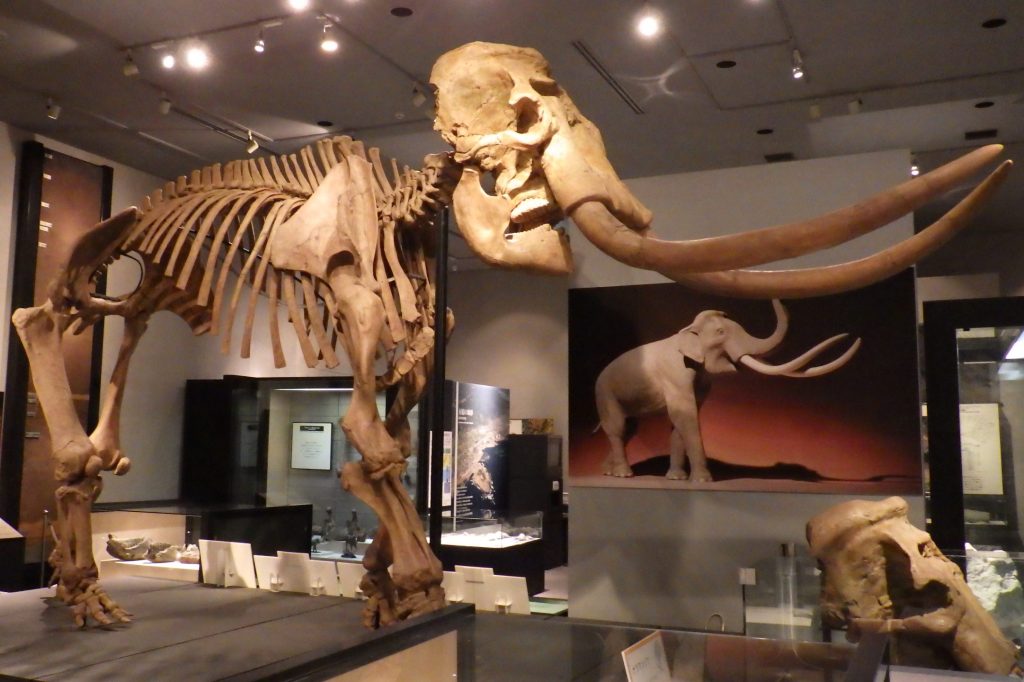
November 17, 2021
Efforts of the Natural History Museum and Institute, Chiba in the wake of the COVID-19 Pandemic
[2021.11.17]
Satoshi MARUYAMA
Researcher
Natural History Museum and Institute, Chiba
Introduction
The Natural History Museum and Institute, Chiba (hereafter referred to as the Chuo-Haku) is a general museum of nature and humans of the Boso Peninsula. The Chuo-Haku is made up of the Main Branch in Chiba City, the Otone Branch, in Katori City, Otaki Castle Museum in Otaki Town, and the Coastal Branch in Katsuura City.
First, allow me to introduce the Main Branch where I reside (Image 1). The Exhibit at the Main Branch of the Chuo-Haku is organized around the theme of “Nature and Humans of the Boso Peninsula” and divided into seven exhibition rooms: “Geology and Physical Geography of the Boso Peninsula,” “Natural Life of the Boso Peninsula,” “Classification of the Natural Life,” “Vivarium,” “Seas around the Boso Peninsula,” “History of the Boso Peninsula,” and “Interaction of Nature and Man.” In addition, there are “Interactive Displays” and a “Temporary Exhibition Room”. Gross area of these exhibition rooms is 4,291 m².1 There is also Ecology Park which is an observation field, adjacent to the main building.
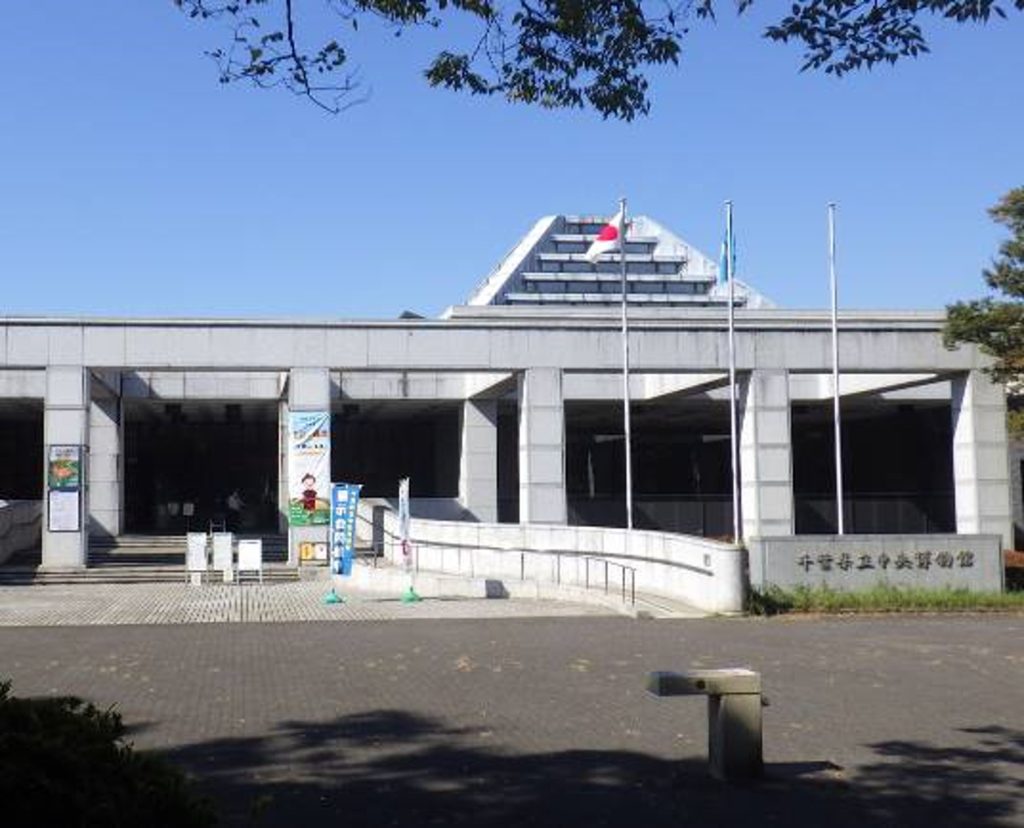
The mission of the Chuo-Haku is stated as follows, “Natural History Museum and Institute, Chiba, together with the citizens of the community, strives to collect and accumulate information regarding nature and history, as well as discover new values through scientific research from a basic and international perspective. The Museum and Institute disseminate those values and information to the citizens stretching throughout the Prefecture through education, exhibitions, and all other museum activities as a collective intellectual asset for the future. In addition, as the central comprehensive museum within Chiba Prefecture, we will serve as a center for lifelong learning through interactive exchanges while meeting the wide-ranging intellectual needs of various citizens.”1
In line with this mission, the Chuo-Haku conducts various educational programs such as lectures in specialized fields, field observation programs, interactive events that allow visitors to experience field-specific content, and guided exhibition tours (Museum Talk). The following explains how a medium/large-scale prefectural museum in Chiba was affected, and subsequently handled the unprecedented coronavirus (hereafter referred to as COVID-19) crisis.
Countermeasures against COVID-19 at the Main Branch
Since the outbreak of COVID-19 in early 2020 with no definite end in sight, the fifth wave of infections is finally predicted to wane by the end of October 2021. With that, I will introduce the measures taken until early October 2021.
The first wave of COVID-19 infections vigorously spread throughout the country in February 2020, and the first State of Emergency was subsequently issued. Our establishment experienced our first temporary closure from March 3rd to May 25th. Again, in January 2021, the third wave of infections resulted in the issue of the second State of Emergency. As a result, our establishment closed for the second time from January 9th to March 22nd.1
The COVID-19 measures were divided into three phases, adjusting to the ever-changing circumstances. The first phase was from February to June 2020, followed by the second phase from July 2020 to March 20211, and the third phase from April 2021.
In the first phase, measures were implemented to prevent the spread of the infection among visitors and staff, based on Japanese Association of Museums’ Infection Prevention Guideline. Time restriction was placed on entry and viewing, as the staff checked the temperature of visitors and had them fill out an entry form upon arrival to avoid the “Three Cs” (closed spaces, crowded places, and close-contact settings.) In the second phase, the objective was to ensure the safety of museum activities under the prolonged epidemic. In addition to avoiding the “Three Cs,” we stayed diligent in our efforts to prevent the spread of the virus as we aimed to enrich our activities. As a result, educational dissemination programs (lectures and observation sessions) were recommenced, a few facilities reopened, and some restrictions on volunteers and citizen researchers were lifted1. In the third phase, the restrictions were further eased. School group visits were recommenced, and the entry procedures were simplified to reduce the burden on the visitors while revitalizing museum activities.
As described above, each stage was carefully thought out to maintain the balance between COVID-19 infection prevention and resuming museum activities.
Educational Activities during the COVID-19 Pandemic (From My Experience)
In this section, I will reflect on the results of the educational activities that I led or took part in organizing.
For the fiscal year 2020 (April 2020 to March 2021) all in-person events were canceled. During this time, I participated in events organized by other museums to broaden my knowledge for future events back at my museum. As a new initiative, in December 2020, I organized an online lecture with the Earth-Science Educational Research Group in Chiba titled, “How to investigate mammal fossil: a key to enjoy museums.” Due to the exhibition rooms’ restriction, we added photos of the exhibits to the presentation and tried to bridge the gap between the online world (virtual) and the real world (exhibition space, specimens, and materials.) On the other hand, I thought I was somewhat familiar with the software for online activities through my experience in various workshops, but as an actual presenter, I was confronted with the difference between presenting slides and showing actual objects. I had much to reflect on after the experience.
For the fiscal year 2021 (April to October 2021,) I will introduce some specific examples of the activities we were able to execute under the ever-changing circumstance of the pandemic. In June, we were able to host the “Fossil Hunting on the beach” observation program with fewer participants and more staff to ensure an environment that avoided the 3C’s. In addition, to reduce the exchange of specimens and tools among the participants, the specimens were solely observed for reference, not touched. We also tried a new approach by using a wireless guide system. However, the system did not function at the beach as well as we had hoped, as the voices transmitted were hard to hear and there was danger in the cords getting tangled. There was also concern about the risk of heatstroke due to wearing masks during these hot outdoor observation sessions.3 For the class held for the students at the school for the visually impaired in July, and the geology lecture “How to compare various Vertebrates” held in August, the same measures were taken such as reducing the number of participants and making sure there was enough social distancing. Again, to reduce the number of specimens exchanged among the participants, we had prepared a sample of a pig skull for every participant (Image 2). Also, as the lecturer, I wore a face shield as an infection prevention measure (Image 3).
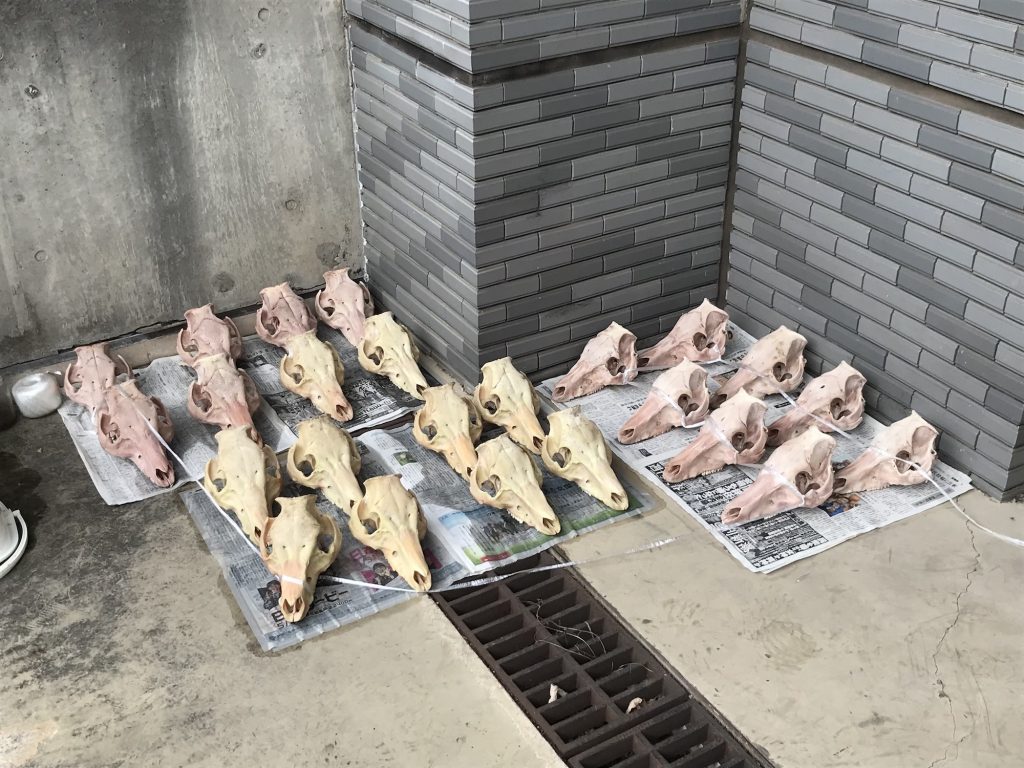
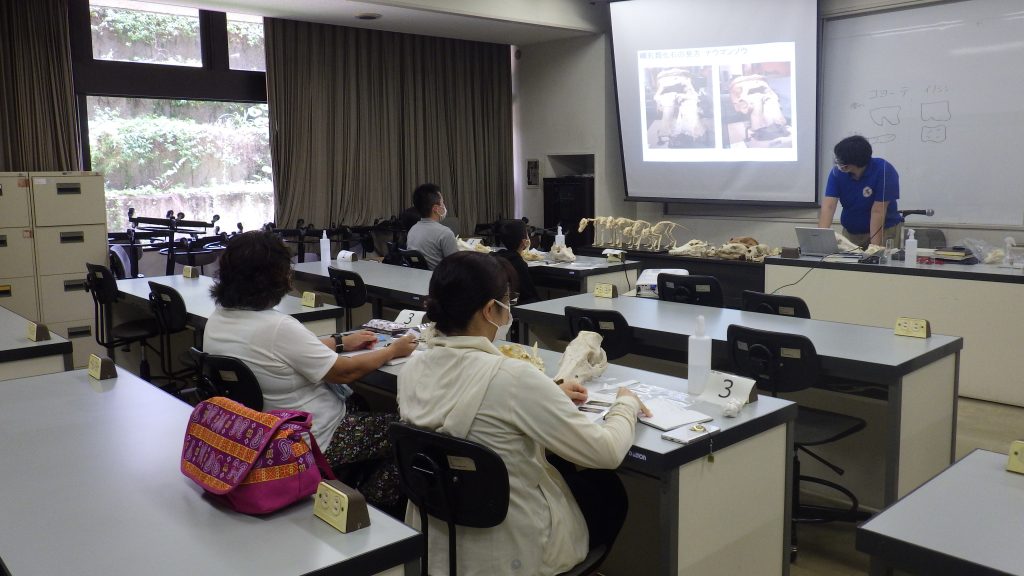
Although the lecture had many restrictions, the participants were able to touch and compare the specimens which resulted in a high satisfaction rate (Image 4). Through this experience, I realized there is value in “touching” the specimens and materials, despite the COVID-19 crisis, and to continue producing opportunities like this requires various innovation and creativity. The school for the visually impaired will continue with another class in November with the theme of “fossils.”
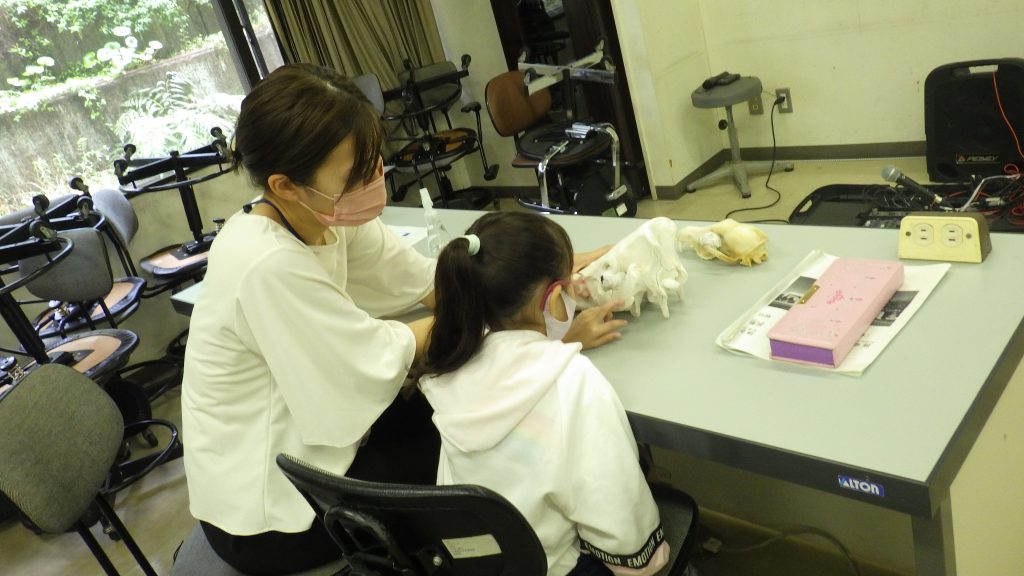
Since the third State of Emergency was lifted for Chiba Prefecture in October 2021, the regularly scheduled Museum Talk resumed for the first time in almost a year and a half (Image 5). I was able to participate in this Museum Talk as an assistant. For the first time, we set a cap for the maximum number of attendees and used a wireless guide system to provide commentary. There were no major issues regarding the commentary and sufficient distancing was maintained between the attendees. However, discussion during the Q&A portion and general dialogue between the attendees were too limited and I felt there was definite room for improvement regarding the interaction between the lecturer and the attendees.
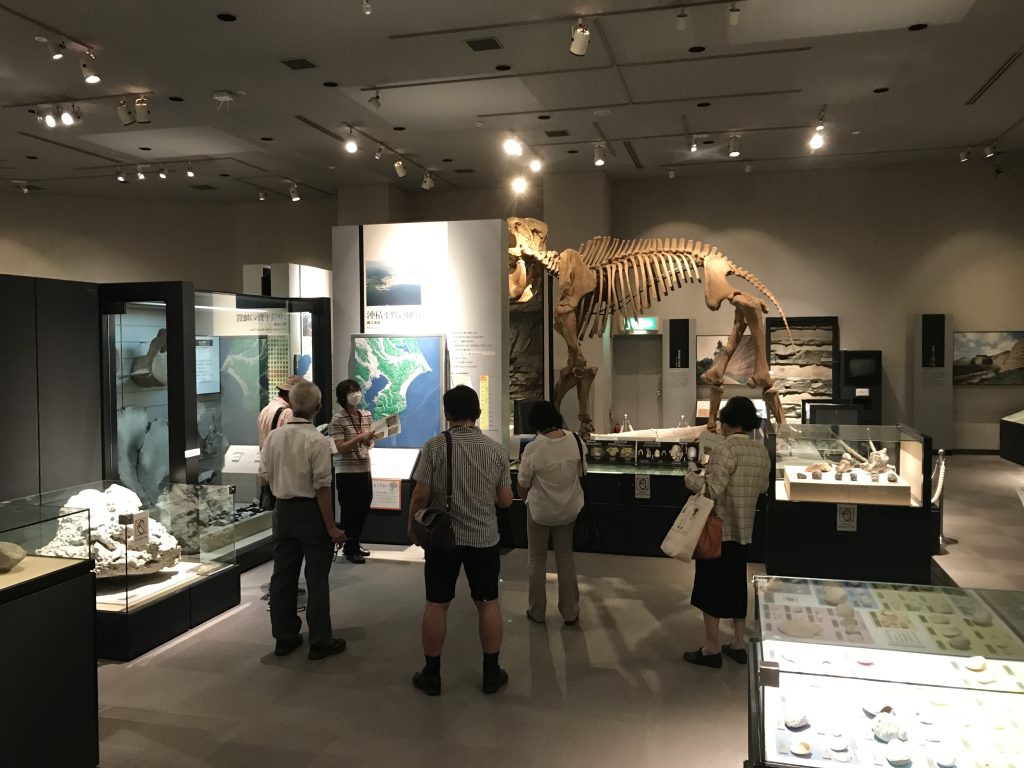
As described above, the user-oriented events were a series of trial-and-error, but with every event, we gained new knowledge and an opportunity to reflect on how to better ourselves. Although we cannot organize the events exactly as we used to do, we are working on educational programs that fit the “new normal.”
Efforts set in motion by the COVID-19 pandemic
The COVID-19 pandemic has put a restriction on many facets. However, as a result of the temporary closures and other hardships that we faced, progression was made throughout the entire museum.
For example, the permanent exhibition was updated. In the “Geology and Physical Geography of the Boso Peninsula” exhibition room, a reconstructed model of the Naumann Elephant and photographs were installed (Image 6). In addition, a new commentary section was fixed on the recently publicized Chibanian Age (Image 7). We also launched “The Chuo-Haku from Home” website, where the public can enjoy content such as coloring sheets and Sugoroku from their homes. Also, we were able to take more time and reposefully organize the specimens in our establishment since before the COVID-19 pandemic. COVID-19 has admittedly had some positive effects on our museum, and we were able to make strides in projects that would otherwise have been difficult due to scheduling conflicts and other tasks at hand.
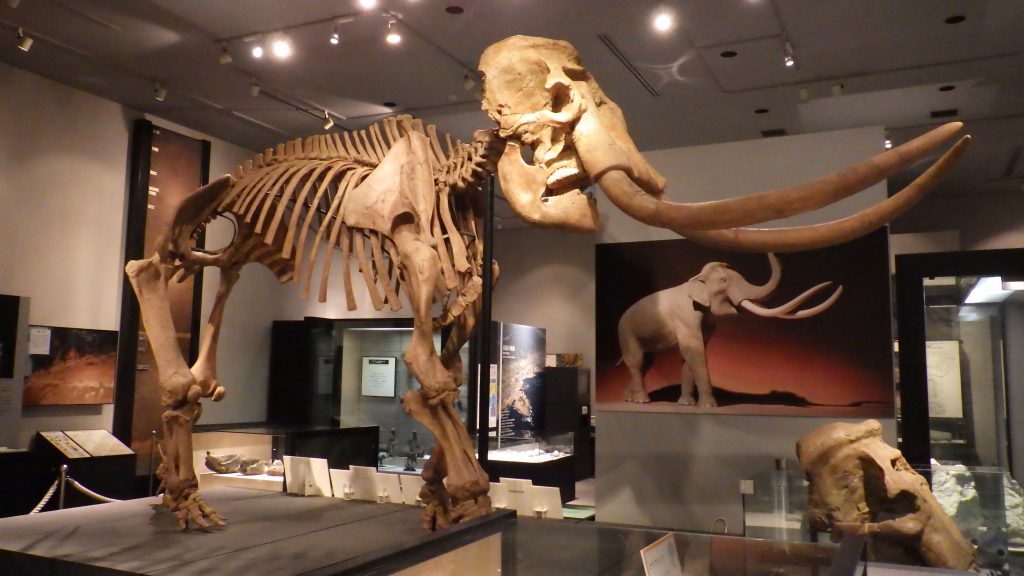
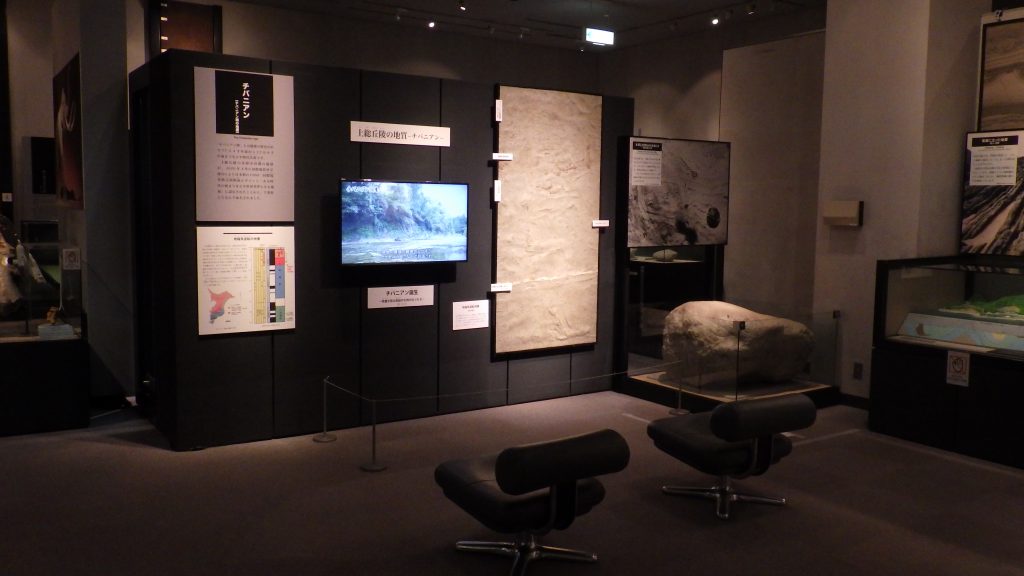
The Future
In the wake of the COVID-19 pandemic, our museum has carried out projects under various restrictions. Through them, we found it is not simply about maintaining our operations as before, but it is vital to take action to change this quagmire into an opportunity. The future remains uncertain, but we will strive to make the Chuo-Haku as enjoyable as possible for visitors and users.
Natural History Museum and Institute, Chiba HP
- Natural History Museum and Institute, Chiba, 2021. Natural History Museum and Institute, Chiba Annual Report 33 (2020 fiscal year)
- Japanese Association of Museums, 2020. Guideline in Preventing the Spread of the Novel Coronavirus in Museums. Museum Studies 55 (11): 76-83
- Yoshinobu Hashimoto, Kayoko Onimoto, Satoshi Maruyama, Hiromi Takao, Chunni Chiu, 2021. Proposal for the development of comprehensive guidelines for the prevention of coronavirus infections in museums. Museum Studies 56 (2): 25-28